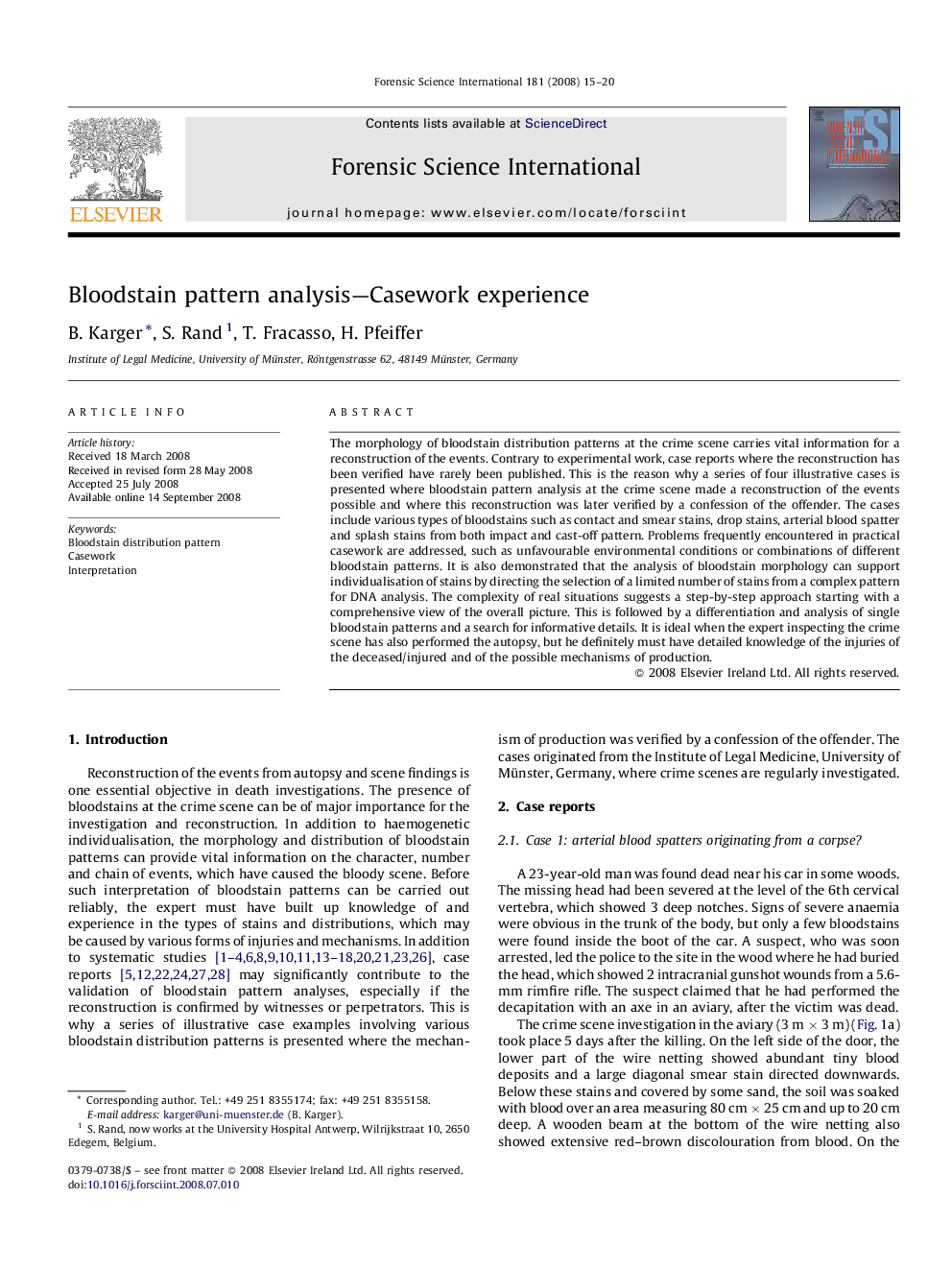| Article ID | Journal | Published Year | Pages | File Type |
|---|---|---|---|---|
| 97590 | Forensic Science International | 2008 | 6 Pages |
The morphology of bloodstain distribution patterns at the crime scene carries vital information for a reconstruction of the events. Contrary to experimental work, case reports where the reconstruction has been verified have rarely been published. This is the reason why a series of four illustrative cases is presented where bloodstain pattern analysis at the crime scene made a reconstruction of the events possible and where this reconstruction was later verified by a confession of the offender. The cases include various types of bloodstains such as contact and smear stains, drop stains, arterial blood spatter and splash stains from both impact and cast-off pattern. Problems frequently encountered in practical casework are addressed, such as unfavourable environmental conditions or combinations of different bloodstain patterns. It is also demonstrated that the analysis of bloodstain morphology can support individualisation of stains by directing the selection of a limited number of stains from a complex pattern for DNA analysis. The complexity of real situations suggests a step-by-step approach starting with a comprehensive view of the overall picture. This is followed by a differentiation and analysis of single bloodstain patterns and a search for informative details. It is ideal when the expert inspecting the crime scene has also performed the autopsy, but he definitely must have detailed knowledge of the injuries of the deceased/injured and of the possible mechanisms of production.
